Tuesday, January 26, 2016

Rietveld Graduation Show
Émilie Ferrat [x] and François Girard-Meunier [x] graduated from the Department of Graphic Design. As part of their graduation show they presented a collaborated project ‘Ceramics with Émilie / Ceramics with François.’ This project was chosen by an independent jury to be nominated for the Design Award and was for that reason part of the exhibition ‘Selected Gerrit Rietveld Academyie Awards 2015’ organized in Castrum Peregrini [x].
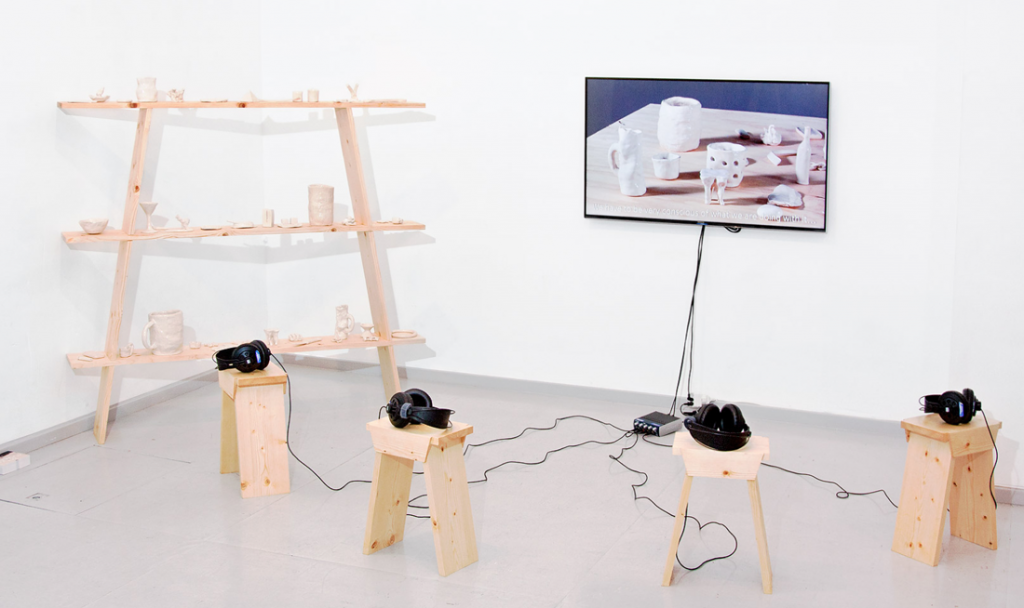
Castrum Peregrini Presentation
Ceramics with Émilie / Ceramics with François
‘The medium is the message.’ These words of Canadian philosopher Marshall McLuhan still offer room for artistic exploration. Because how exactly the message changes when the medium, or the material, is changed remains shrouded in mystery. In their collaborative project, graphic designers Émilie Ferrat and François Girard-Meunier use a classic yet surprising approach: dialogue.

The installation consists of a video of the two designers conversing and a number of glazed clay models –a mobile telephone, for example, and shot glasses, jigsaw pieces and some undefinable models– with which Ferrat and Girard-Meunier stretch the boundaries between form, material and meaning. A new plain field is established. The video shows their fresh and resolute debate on their progress in working with ceramics – a new material for both of them. The dialogue is explicitly overacted, which stresses the artificiality of the form (a recorded conversation about models they made earlier). The overacting harmonizes nicely with the glaze on the clay models: a shiny layer upon robust content. The spoken and material form are one.
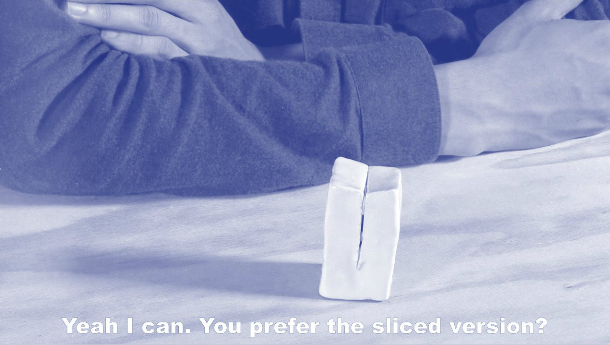
‘Do you think it’s the ceramics that is giving meaning to our talks,’ one of them asks, ‘or rather that our talks are giving meaning to the ceramics?’ The relationship between words and things is a complex one. It is a relationship that has puzzled many philosophers, artists and linguists. By deliberately speaking as amateurs, ferret and Girard-Meunier open up a new perspective on this relationship.
The material prompts conversations that lead beyond just ceramics: design in a broader sense, a philosophical ‘brain in a vat’ argument, personal insecurities and the history of art, these are all subjects that lay hidden in the material. The ceramics function as a conversation starter: the medium turns out to contain many messages.
text by Thomas van Huut [x]
for full length video [19 minutes 54 seconds] contact François Girard-Meunier
Friday, November 21, 2014
In general the work of Aliki van der Kruijs explores the relationship (context) between colour, culture and environment with a specialization in textile. Nature is material and subject at the same time. During the master Applied Art at the Sandberg Institute (2012) Aliki juxtaposed her graphic- and fashion design background into a practice where textile as information-carrier plays a fundamental role.
Her thesis Parallel landscape is part of CONTEXTILE: a research into colour, context, text & textile. This thesis is not about what colours are but attempts to see what colours can do.

To read the full thesis you can click the image above or link to ISUU where it is published among her “Traveling concepts” like Made by Rain and others.
Aliki vd Kruijs at ISUU.com

Parallel Landscape, Sandberg Institute thesis by Aliki van der Kruijs 2012 : graphic design icw Lena Steinborn
quotes:
Colour is everywhere. Everything is coloured. Colour is always the characteristics of something. Colour is an ever-changing self. Can colour support itself? Where does colour become visible? How do we make use of colours? Can colour become an environment in itself?
The remarkable thing about colour is the way it takes place. Visible as well invisible. This thesis is not about what colours are but attempts to see what colours can do.
I tried to find out how colours are changing location and dimension. It’s a thesis on how colour takes place parallel to the landscape in which they emerge.
Wednesday, January 25, 2012
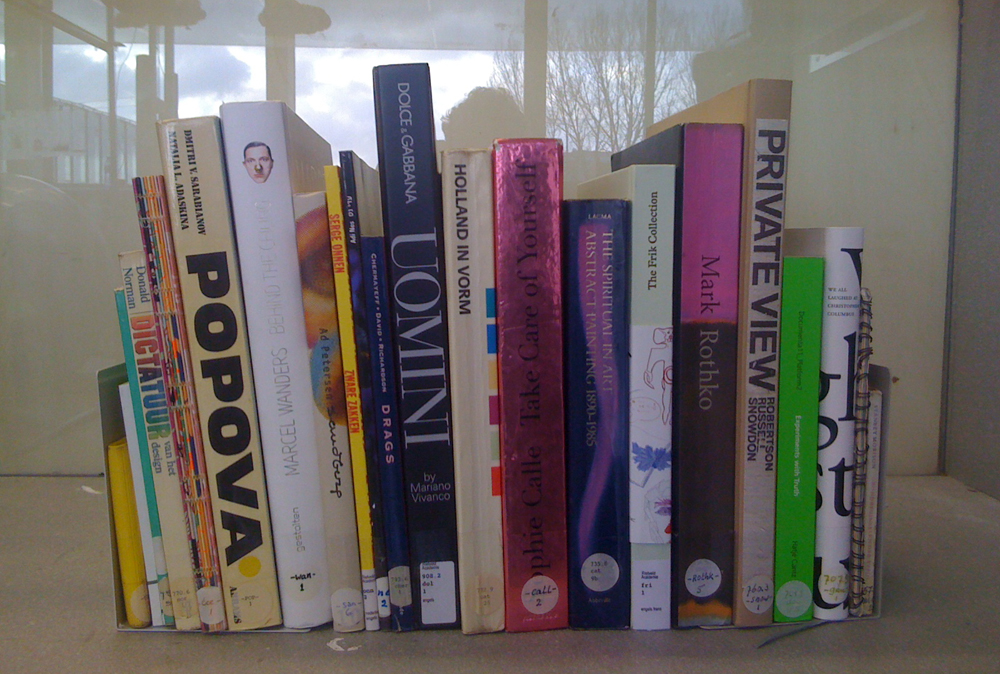
This post is part of he subjective library project “Unopened Book”
An assignment initiated by Corinne Gisel and Nina Paim [graphic design]
in cooperation with Henk Groenendijk and Matthias Kreutzer [supervision]
Intro part 1 /The Assignment
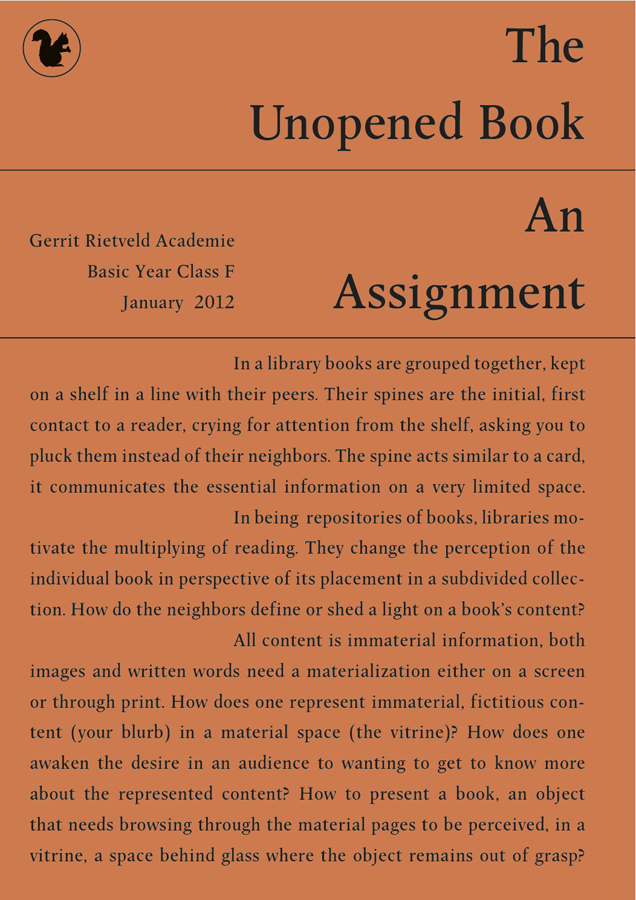
Assignment as presented
Select a book from the library collection based solely on its spine.
You will be given only a short amount of time to make a choice, you probably have to make a very spontaneous and subconscious decision. We will take your book away to make sure that it remains unopened. It will be kept together with the other unopened books in a vitrine in Rietveld Academy Building for the time of the assignment. Now rationalize your decision:
Why did you choose for this spine and not for another? What do you think this book is about?
Write a Blurb on this Unopened Book and visualize that imagined content in a vitrine!
[x]
read all “Blurbs” and see all “Vitrines” imagined as part of this assignment, by selecting Unopened Books from the “Projects” Menu
Intro part 2 /The Lecture
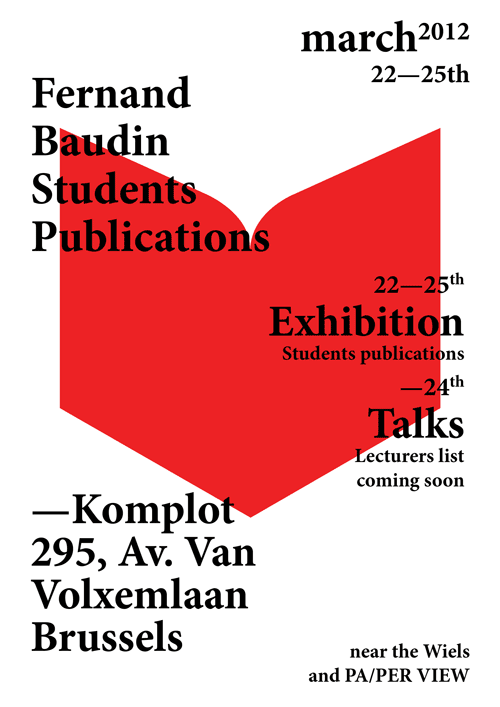
Fernand Baudin Students Publications March 2012 was the first edition of a yearly event dedicated to students publications. It was an event dedicated to editorial productions by students in Belgium and connected to the international scene. The first year was an experimental, reflective and prospective one – engaging students, teachers and ‘professionals in public discussions on the practice of making and thinking books today. It was also a moment to think about publications (book fairs, book awards, book exhibitions, etc) questioning their relevance to the realities of students’ practice today.
As part of discussions and presentations, organized during this event, Nina Paim and Corinne Gisel gave a lecture presenting their 2012 graduation project Library Talk of which “Unopened Books” was a part initiated in cooperation with the Basic year’s Design/DesignResearch program.
This lecture is integral published in the book “Fernand Baudin Students Publications/This Is Not A Most Beautiful Books Award” and can be lend in the Rietveld Library [lib no: ]. Mixing different times and spaces this publication proposes another way to document that event. It publishes elements retracing its making, explaining its structure. It makes public what happened before and during the event –the pieces and the facts– but also what happened after and is still happening while those lines are written.
Lecture about "Unopened Books" by Nina Paim and Corinne Gisel as part of their "Library Talk" graduation project

“click on image above to download lecture [15 pages]
thanks to Nina Paim for permission to publish the lecture
thanks to Lorain Furter for donating a copy of the book to the library
Tuesday, October 27, 2009
Conditional Painting is truly happening in the van Abbemuseum Eindhoven! They call it the Vitruvian Paint Machine.

As part of “Take on me (Take me on)” /Dutch Design Week 17 to 25 Oct 2009, Luna Maurer and Edo Paulus executed a mural painting on pre determined conditions based on the proportions of the body and visitor interaction.
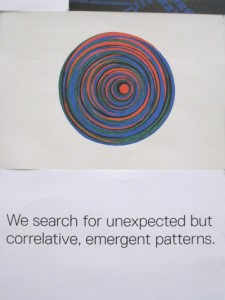
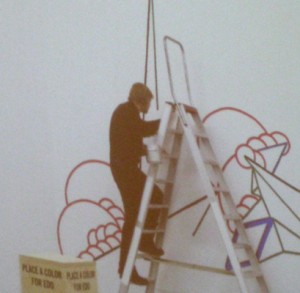
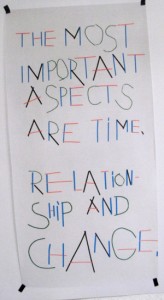
The act of designing is based on rules they say. So Luna and Edo, together with Roel Wouters and Jonathan Puckey, created a manifesto of explicit rules for design.
Visiting their lecture, as part of the “Take on me (Take me on)” event, they made it clear that setting strict conditions does disconnect you from subjective standards and creates awareness in the process. A beautiful time based movie of their “machines” made this crystal clear.
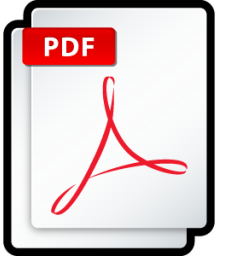
download this research essay: by Jules Esteves: “Conditional Drawing, Conditional Painting” questioning the practice of Conditional Design.
Saturday, April 18, 2009

On request of Gray Magazine #5 (yearly published on the occasion of Rietveld’s final exams show) 40 students of the Foundation Year, guided by Henk Groenendijk and Tine Melzer, unleashed a two day project to create a new context for a highly varied 20.000 slide images archive. André Klein, now chair of Fine Arts and Sandberg Applied Art Dept, compiled these slides over his 25 year long career of art history teaching.
We could only guess after the motives and meanings that bound these images together in a dynamic process of ever changing contexts and wonder what new context of relation they would have in the eyes and minds of the basicyear students. The uninhibited existence of a ‘democratically’ selected 1000 reproductions, registrations and images was given new meaning through a process of retagging with subjective keywords. In the 2 day process new contexts and connections were created, processes where discovered, and results presented in a physical display of image related tag-lists and monumental alphabetical (key)word lists. I am a kid
I burn
ice
ice cube
iceberg
ice cream
Iceland
ideal
IKEA
ill
illusion
Illustration
image
imagination
immigration
imitate
imitation
immaterial
impale
imperfection
impossible
impression
in scene
incest
inconvenient
increasing
identical
India
India
Indian
industrial
industry
infinity
influence
information
ink
inner space
innocence
inquiry
insane
insect
insecure
inside
insides
installation
institute
instruction
instruments
integrate
intellectual
intense
interaction
intercourse
interest
interference
intergalactic
interior
intertwine
intimacy
intruder
invasion
invention
invisible
invitation
irresponsible
island
isolation
it
Italy
itch
Awareness surfaced about the relation between content and image and word and form and content in the contexts of our own terms. Tagging images uncovered these relations
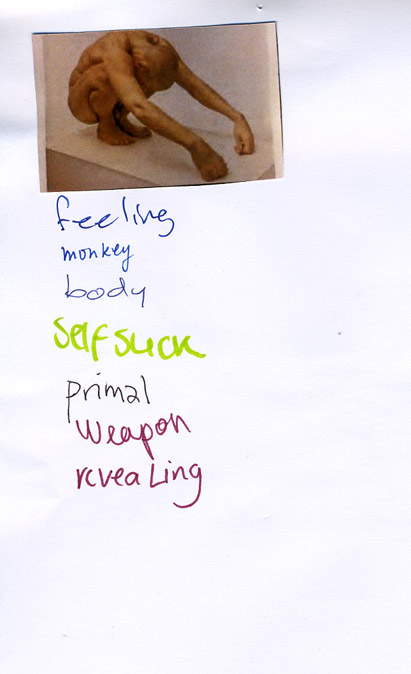
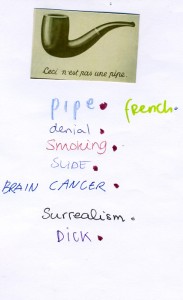
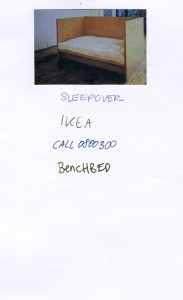
some of the question we asked ourselves were:
The mechanisms of images and imagination on one side and the mechanisms of names and naming on the other – where do they both meet?
What is the link between what we see and how we call it?
What is the process of agreement with the other(s) to find relevant and appropriate names?
Is tagging also a kind of ‘baptizing’? Or rather an act of memory and memorizing, how things are called?
What is the level of interpretation when we have to give an image a tag?
What is the relationship between tag and image, word and view?
:

download Gray Magazine # 5 [this is a 44 MB document] :
For more information on this and other lecture projects based on the same archive, read Gray Magazine #5. Get your own hard copy from the Library
.
By admin
/ Categories: art, image + language, instalation, lecture, Scripties, Various Tags: 50-TravelTags, benchbed, body, call 0800300, denial, dick, feeling, Gray Magazine, IKEA, imagination, keywords, monkey, pipe, primal, revealing, sleepover, slide, smoking, surrealism, tagging, tagging images, weapon
No Comments
Sunday, March 9, 2008
The International Institute of Social History (IISH) is the world’s largest documentation and research centre in the field of social history. Since its foundation in 1935, the institute has dedicated itself to the collection, preservation and availability of the heritage of social movements worldwide.

Situationist Pamphlet 1967
The publication “Reviewed Printed Matter” is the outcome of a review assignment which was part of the theory program Critique & Actuality in the graphic design department of the Gerrit Rietveld Academie, 2007. The eleven-day program was compiled by Kasper Andreasen and was based on studying and understanding different methodologies of reviewing and analyzing printed matter; selected posters, pamphlets, cards and books from the archives of the Institute of Social History in Amsterdam.


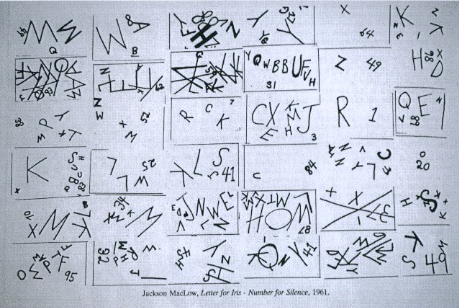
Nieuwe Realisten Poster 1964 - poster archive - Letter for Iris- Number of silence
The International Institute of Social History holds over 3,000 archival collections, some 1 million printed volumes and about as many audio-visual items. The available Collections are accessible through an online catalogue, an online index of archives and inventories. The IISH is also home to a number of other documentary institutions, most notably the Netherlands Economic History Archive (NEHA) and the Press Museum. Both offer supplementary collections and services. Their material is included in the IISH catalogue. Visitors can consult the collections for reference and research in the reading room.

download this research reader: Reviewed Printed Matter
[initiated by Kasper Andreasen]





















